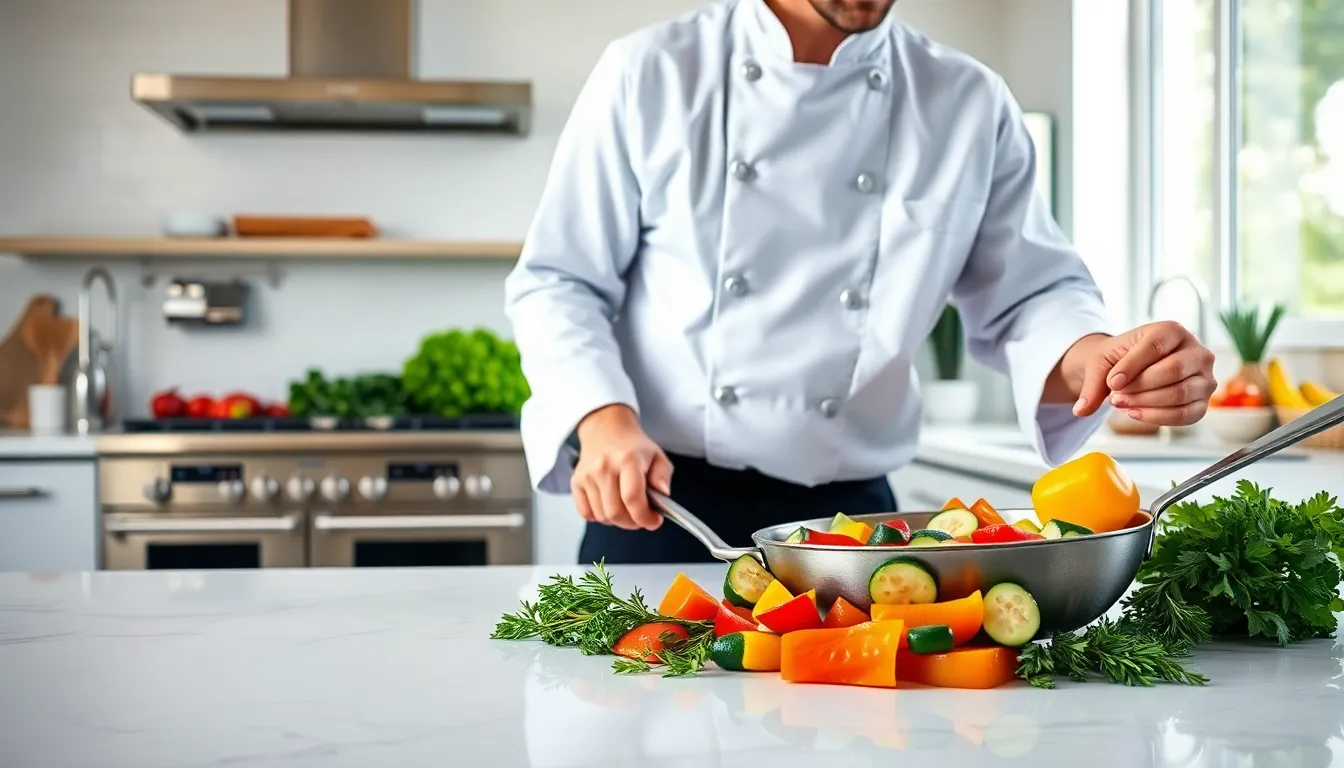Ever wonder how your favorite chefs whip up those delectable dishes while keeping things healthy? Spoiler alert: it’s all about the cooking techniques. Healthy cooking doesn’t need to be a dull affair: in fact, it can be bursting with flavor and creativity. In this text, we’ll jump into essential healthy cooking techniques that can turn any meal into a culinary delight without the guilt. Let’s transform the way you think about cooking.
Table of Contents
ToggleUnderstanding Healthy Cooking Techniques

At its core, healthy cooking focuses on preparing meals that are not only delicious but also packed with nutrients. But what exactly does it mean to cook healthily? It’s about selecting the right techniques that preserve the integrity of ingredients while minimizing the use of unhealthy fats, sugars, and additives. Healthy cooking techniques often emphasize flavor, texture, and nutrition. They elevate meals from bland to grand without sacrificing health benefits. Mastering these techniques is key to creating meals that can benefit both the palate and the body.
The Benefits of Healthy Cooking Techniques
Why invest time in healthy cooking techniques? The advantages are manifold. First and foremost, cooking at home allows for better control over ingredients. This means fewer preservatives and more fresh produce in your meals. Also, healthy cooking methods can enhance the flavors of food rather than cover them up. Think of grilled veggies drizzled with lemon versus a heavy cream sauce. Not to mention, making wholesome meals can lead to improved energy levels and mental clarity, not to mention the satisfaction of knowing exactly what’s on your plate. In the long run, adopting healthy cooking techniques can pave the way for a healthier lifestyle and even help maintain a healthy weight.
Key Healthy Cooking Techniques to Master
When it comes to healthy cooking, a handful of techniques stand out as must-haves in any kitchen arsenal. Let’s explore:
1. Steaming
Steaming is arguably one of the healthiest cooking methods. By gently cooking food with the steam from boiling water, nutrients remain intact, and flavors shine through. This technique works wonders for vegetables, fish, and even grains.
2. Grilling
Grilling adds a delightful smoky flavor without the need for excess fat. Cooking over an open flame or hot coals helps caramelize natural sugars, creating complex flavors and enhancing the experience of simple foods. Bonus: it’s excellent for meats and veggies alike.
3. Baking
Baking can be a surprisingly healthy option, especially when it comes to preparing lean meats and whole grain products. It allows for minimal added fats, enabling the natural flavors to flourish while achieving that golden, crispy texture everybody loves.
4. Sautéing
Using a small amount of healthy oil, sautéing is a quick method that retains moisture and flavors in food. It’s fast, and versatile, and allows for the addition of herbs and spices to elevate the dish even further.
5. Roasting
Roasting brings out a deep, rich flavor in vegetables and proteins. By cooking them at high temperatures, the natural sugars caramelize, enhancing taste while using healthier oils for the cooking process.
Integrating Healthy Cooking Techniques Into Your Diet
Incorporating healthy cooking techniques into daily meal prep doesn’t have to be overwhelming. Start by planning weekly menus that focus on these methods. Choose a variety of meats, grains, and colorful vegetables to keep things exciting. Batch cooking is also a fantastic approach, allowing meals to be frozen or stored for later use. This practice not only saves time but ensures that there are healthy options available, reducing the temptation to resort to takeout. Also, take time to experiment with herbs and spices to enhance the flavors of your meals without additional calories or sodium.
Tips for Successful Healthy Cooking
Making healthy meals can be fun and straightforward with a few strategic tips. Here are some ideas to keep in mind:
- Don’t Overcook: Overcooking vegetables can lead to nutrient loss. Cooking them just until tender preserves both flavor and nutrients.
- Choose Quality Oils: When sautéing or roasting, opt for high-quality oils like olive oil or avocado oil. They provide healthy fats without compromising flavor.
- Experiment with Whole Grains: Instead of refined grains, incorporate brown rice, quinoa, or farro into your meals. They add texture, flavor, and essential nutrients.
- Flavor Without Calories: Use fresh herbs, spices, citrus zest, or vinegar to amp up flavor without adding extra calories.





